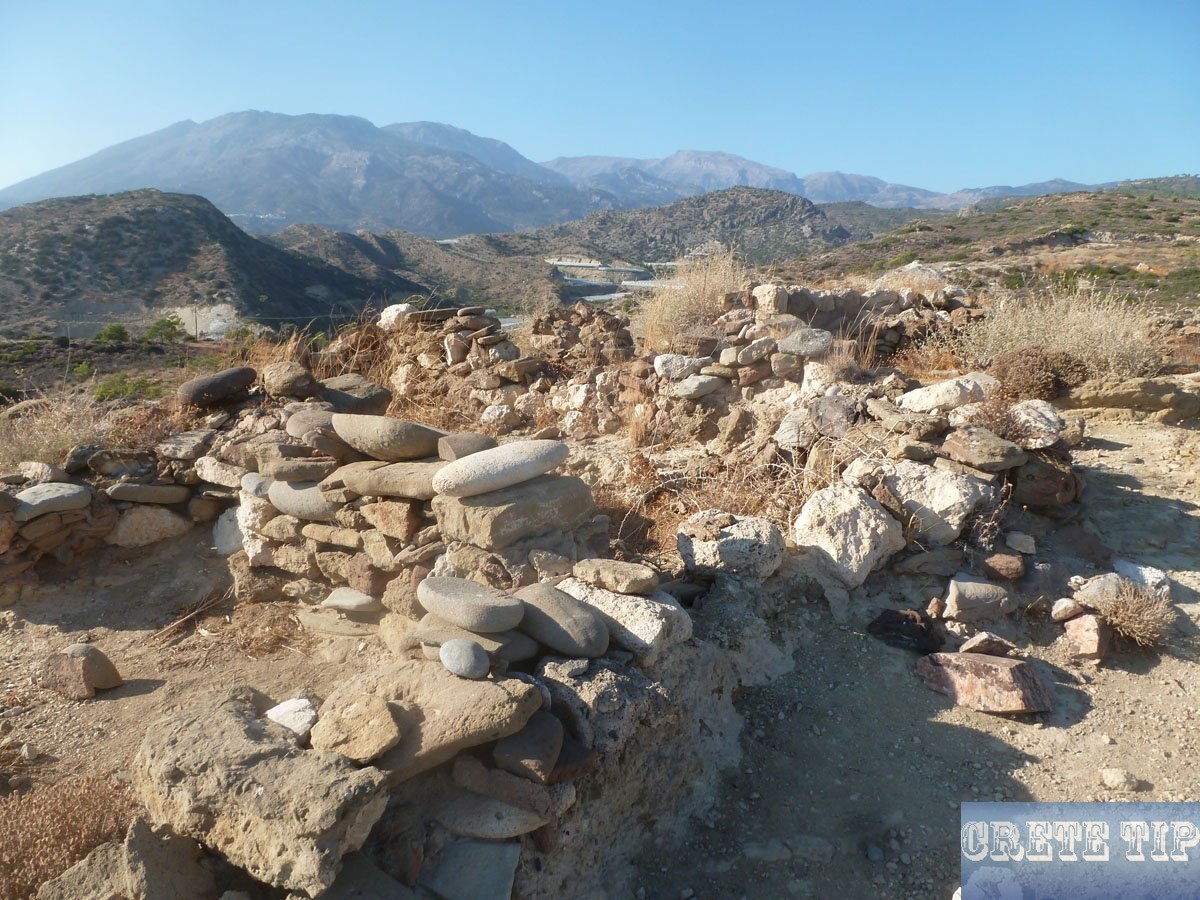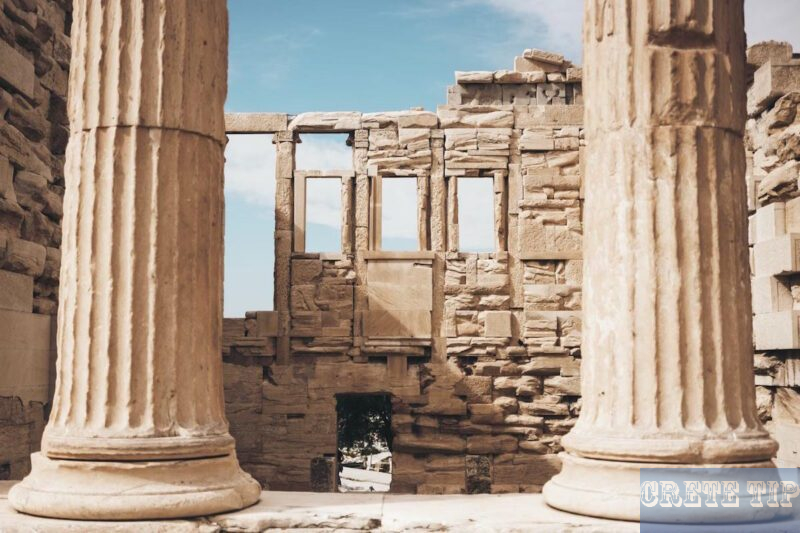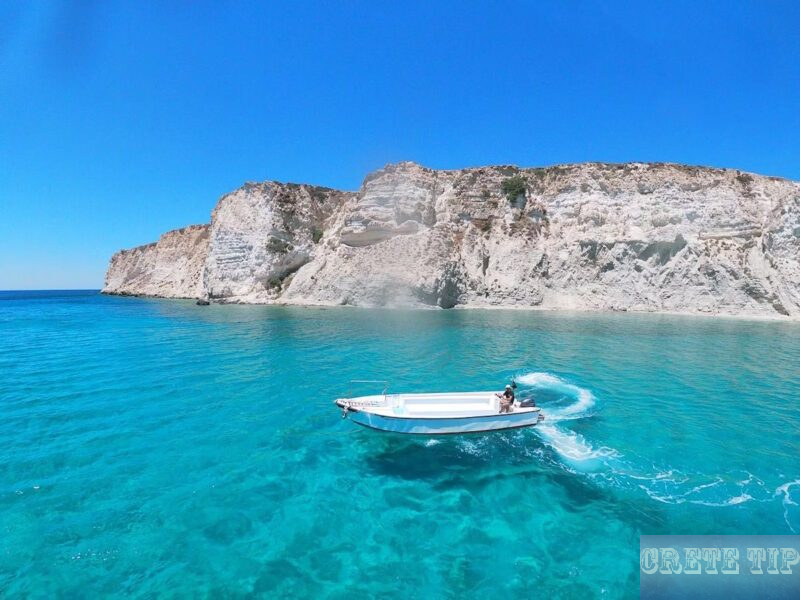Drone flight near Myrtos on the south coast (near Ierapetra) – location of the Minoan villa Pyrgos and village Fornou Koryfi.
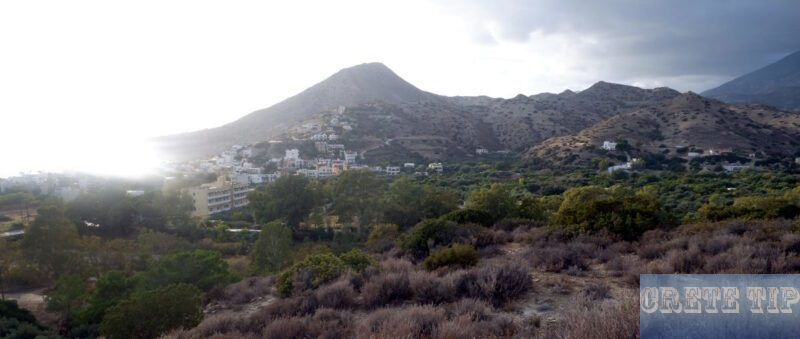
Myrtos
Myrtos is a charming coastal village located on the south coast of Crete, approximately 13km west of Ierapetra. This picturesque destination is known for its beautiful beach and tranquil atmosphere.
The village is situated at the mouth of a wide valley, which is filled with greenhouses and citrus groves. The Kryos River flows through this valley, adding to the area’s natural beauty.
Myrtos Beach is one of the main attractions, combining natural beauty with modern amenities. The beach is characterized by a mix of coarse sand and fine pebbles, and its crystal-clear waters make it ideal for swimming and other water activities.
Visitors to Myrtos can enjoy a range of activities, including swimming, sunbathing, fishing, and hiking. The beach also offers amenities such as sun loungers for those who want to relax and soak up the Mediterranean sun.
The village itself retains a traditional charm while offering modern conveniences, making it an attractive destination for those seeking a peaceful getaway on the southern coast of Crete.
Drone video of Myrtos and the surrounding area
Pyrgos Myrtos

Pyrgos Myrtos is a significant archaeological site of the Minoan civilization located near the village of Myrtos. This Bronze Age settlement offers valuable insights into Minoan culture and architecture outside of the major palace centers.
The site consists of several key features:
Minoan Settlement: Pyrgos was an important Minoan settlement that flourished during the Bronze Age. It provides archaeologists with a unique perspective on provincial Minoan life.
Country House/Villa: During the Late Minoan I period (Pyrgos IV), a significant structure was built on the hilltop. This building is often referred to as a “country house” or “villa” and represents an important example of Minoan architectural design outside the major urban centers.
Long History: The settlement at Pyrgos has a long history, with evidence of occupation spanning multiple periods of Minoan civilization.
Archaeological Findings: The site has yielded various artifacts that provide insights into Minoan culture. These include seals, seal impressions on clay vessels, and other multimedia objects that help archaeologists understand daily life, trade, and artistic practices of the Minoans.
Strategic Location: Pyrgos is situated on a low hill overlooking the east bank of the river, providing both natural defense and access to agricultural land.
The Pyrgos Myrtos site is particularly valuable for its provincial perspective, offering insights into Minoan life outside the immediate hinterland of major centers. This makes it an important location for understanding the broader context of Minoan civilization across Crete.
More photo of Pyrgos Myrtos:




Fournou Korifi
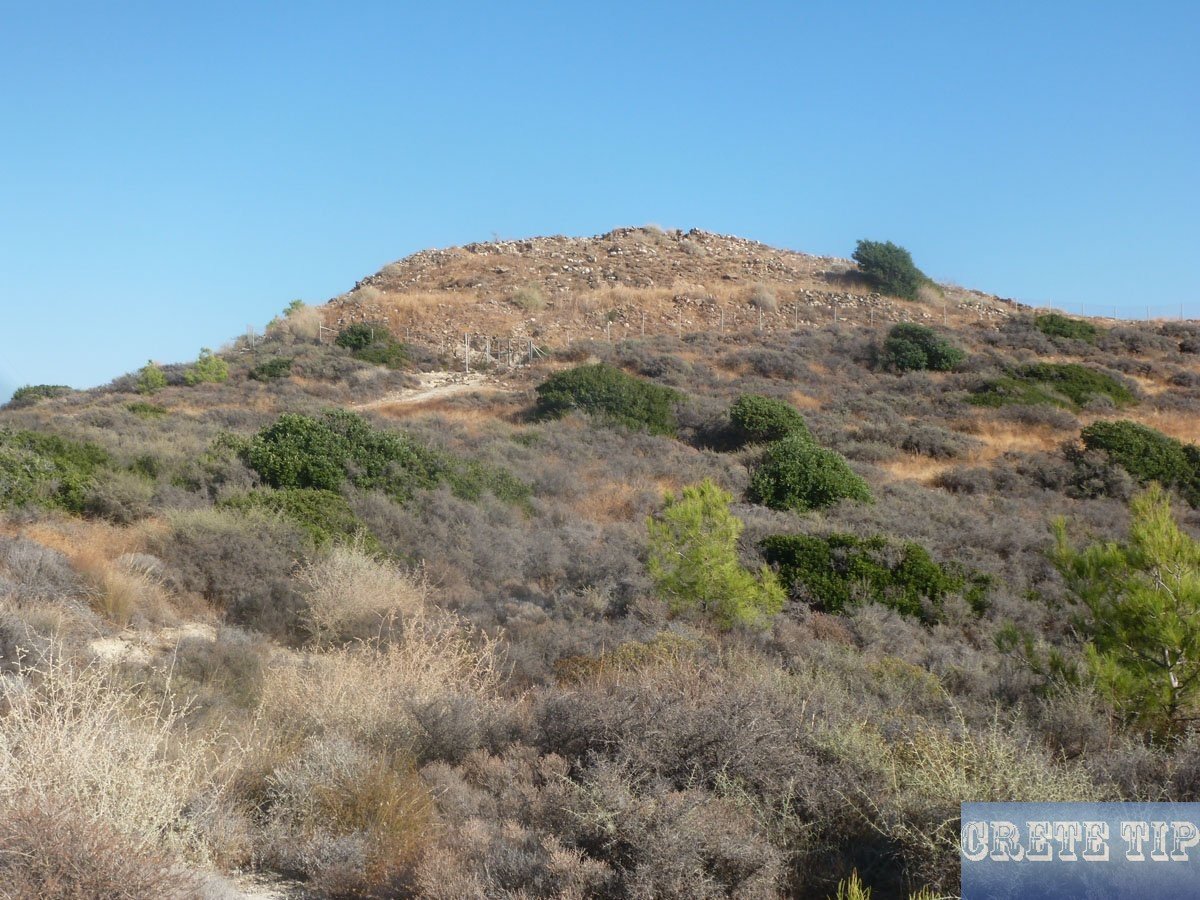
Fournou Korifi is an important Early Minoan settlement located on the island of Crete, Greece. This archaeological site provides valuable insights into the early stages of Minoan civilization. Here are some key points about Fournou Korifi:
Location: The site is situated on the top and upper slopes of a steep hill overlooking the Libyan Sea, near the modern village of Myrtos.
Time Period: Fournou Korifi represents an Early Minoan settlement, dating back to the first phase of Minoan civilization, before the construction of the great palaces.
Architecture: The settlement consists of a complex of small rooms and narrow passages, typical of early Minoan architecture. These structures were built close together, creating a dense, urban-like environment.
Strategic Position: Perched atop a hill with a view of the Libyan Sea, the site’s location provided natural defenses and likely served as a lookout point.
Archaeological Significance: Fournou Korifi is considered extremely important for understanding Early Minoan society. It offers a glimpse into the daily life, social organization, and economic activities of the early Minoans.
Discoveries: Excavations at the site have yielded various artifacts, including pottery, tools, and evidence of early crafts, providing valuable information about the material culture of the period.
Layout: The settlement’s layout suggests a communal living arrangement, with shared spaces and facilities, indicating a well-organized social structure even in this early period.
Preservation: While the site has been affected by erosion and time, significant portions of the settlement remain visible, allowing archaeologists to study its layout and construction techniques.
Fournou Korifi stands as a testament to the early Minoan civilization, offering researchers and visitors alike a unique window into the origins of one of the most fascinating cultures of the ancient Mediterranean world.
